The Berkshire pig, also known as the Kurobuta pig, has experienced its own ups and downs throughout history, being close to extinction.
But, it has managed to thrive and become a true sensation. This is mainly due to its high-quality meat, which stands out compared to other breeds of pigs.
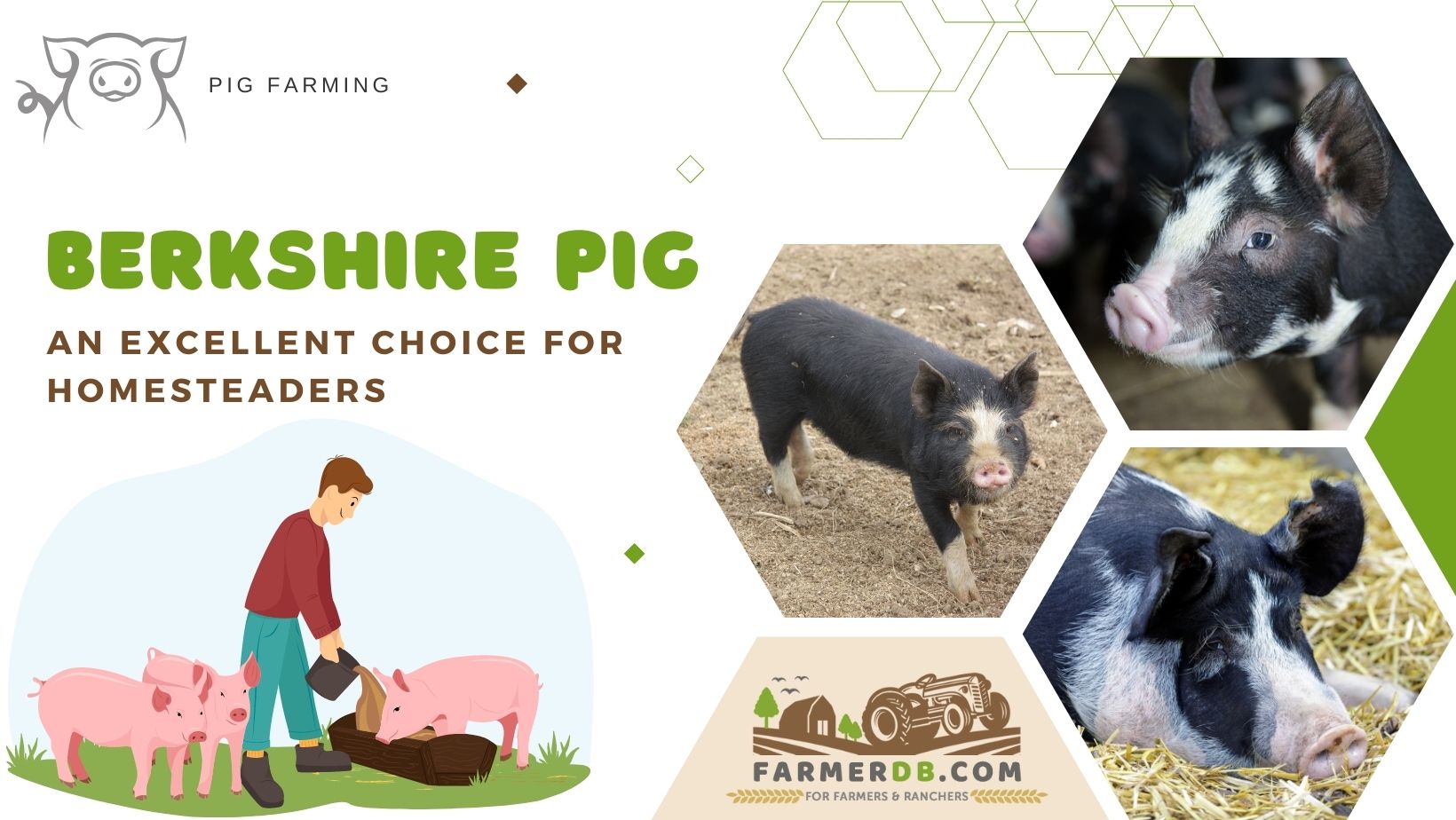
If you’re thinking that this pig breed is for you, here you will find out what is special about this pig that led pig farmers to take measures to prevent its extinction, how to raise your own, and what makes their meat so unique and appreciated.
What is a Berkshire pig?
The Berkshire pig is a domestic, heritage, rare pig breed, also recognized as the oldest recorded pedigree pig breed in Britain and one of the oldest pig breeds in the world.
In 2020, the Berkshire conservation status was listed as vulnerable, with 324 sows and 103 boars worldwide, according to the British Pig Association.
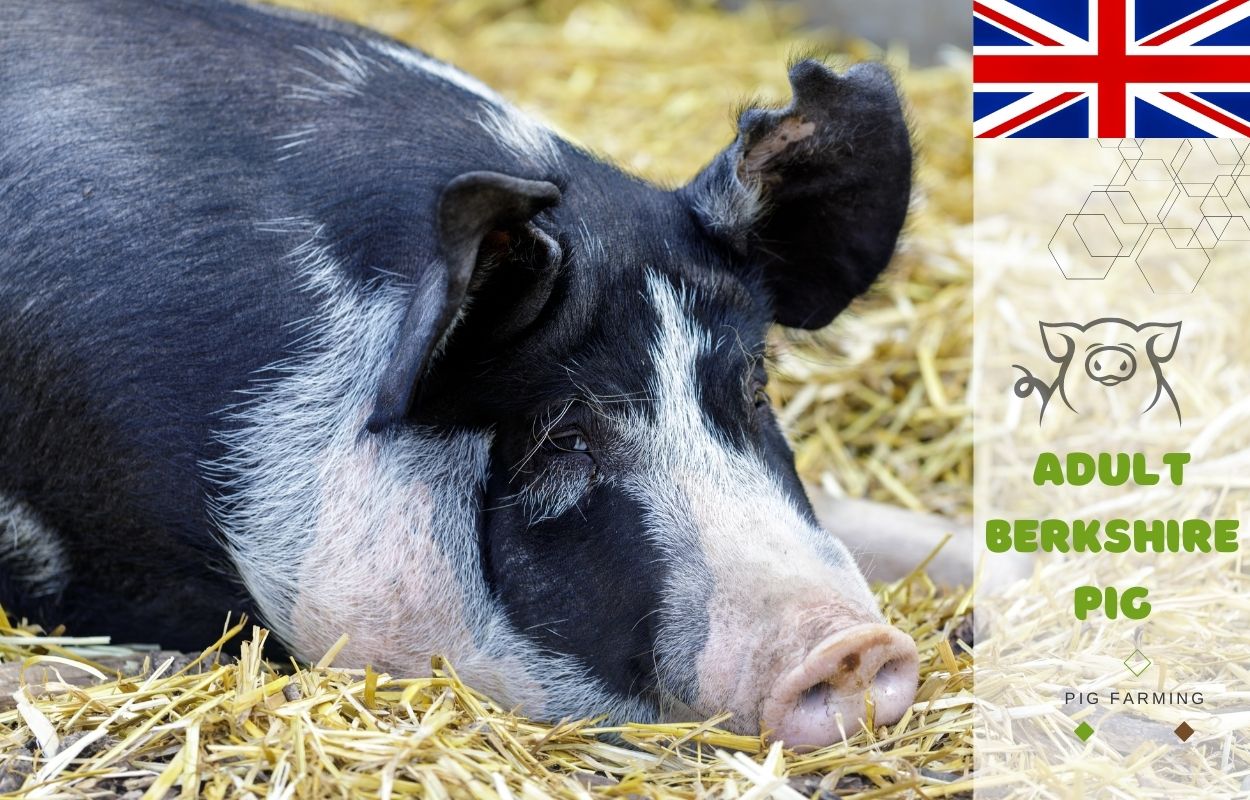
Berkshire Pig Characteristics
Physical Characteristics
The Berkshire pig has unique physical characteristics, setting it apart from other breeds and making it easily identifiable at first sight.
Color
The color of the Berkshire pig is black with a white face and white feet.
Head, Face, and Ears
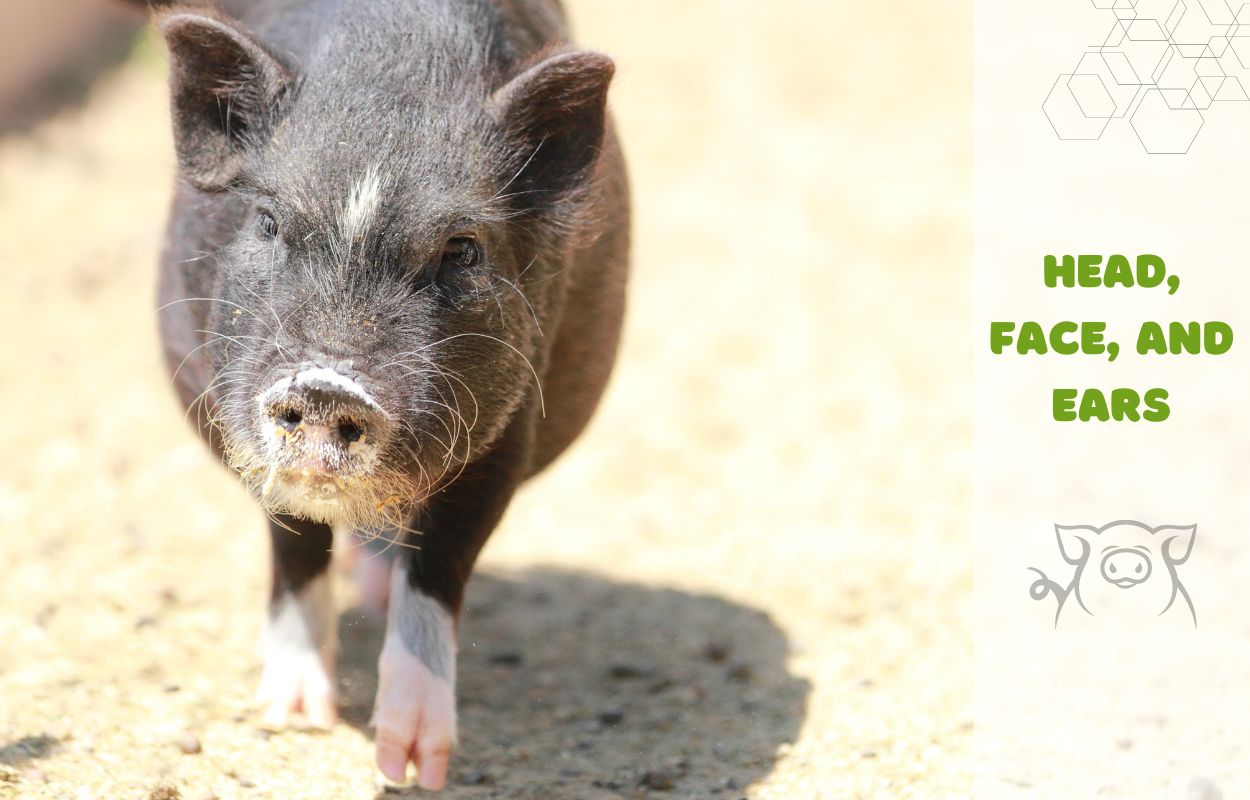
The Berkshire pig’s head has a black color that extends over the ears, eyes, and snout. In some cases, the snout can also have white marks, which are acceptable in the Berkshire breed.
The face of this pig is dished, while the snout is of medium length and slightly upturned. The eyes are wide, as well as the ears, which are also large and erect.
The Berkshire pig’s head is generally well-proportioned, with a strong jawline and a broad forehead.
These features contribute to its robust and healthy appearance.
Neck and Shoulders
The Berkshire’s neck is smooth with no wrinkles or crest, while the shoulders are well-developed and sloping.
Also, the neck is very well-set on the shoulders.
Legs
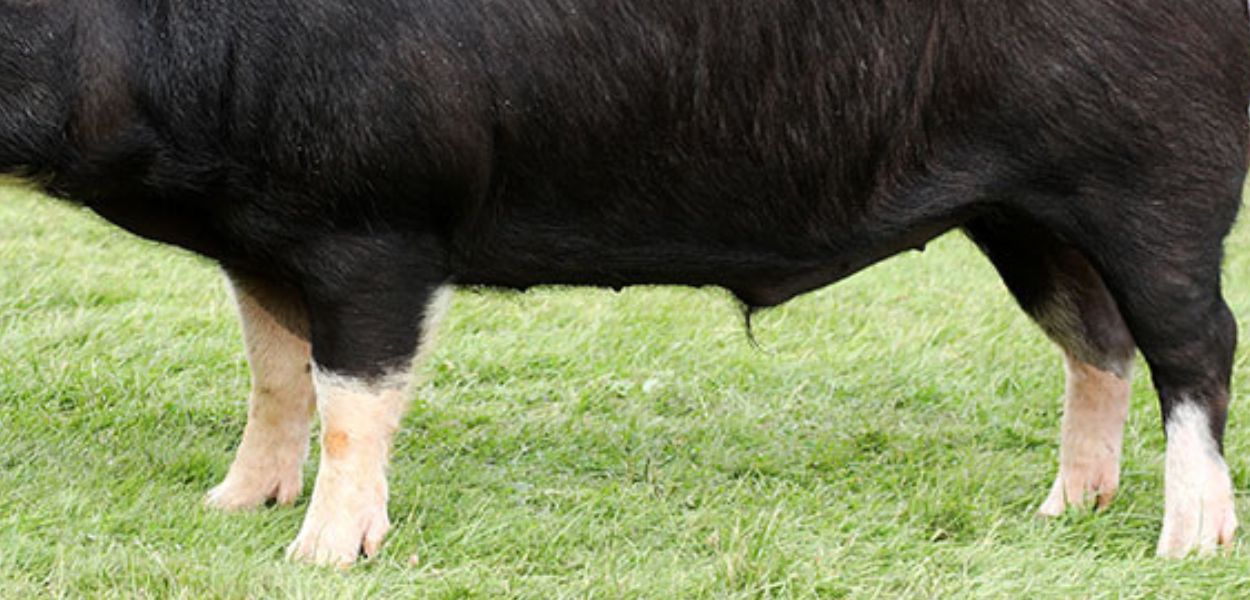
Berkshire pig legs are straight, strong, and muscular, allowing them to carry the pig’s weight and support their active lifestyle.
They are well-set wide apart and have a moderate length that contributes even further to good mobility.
Body
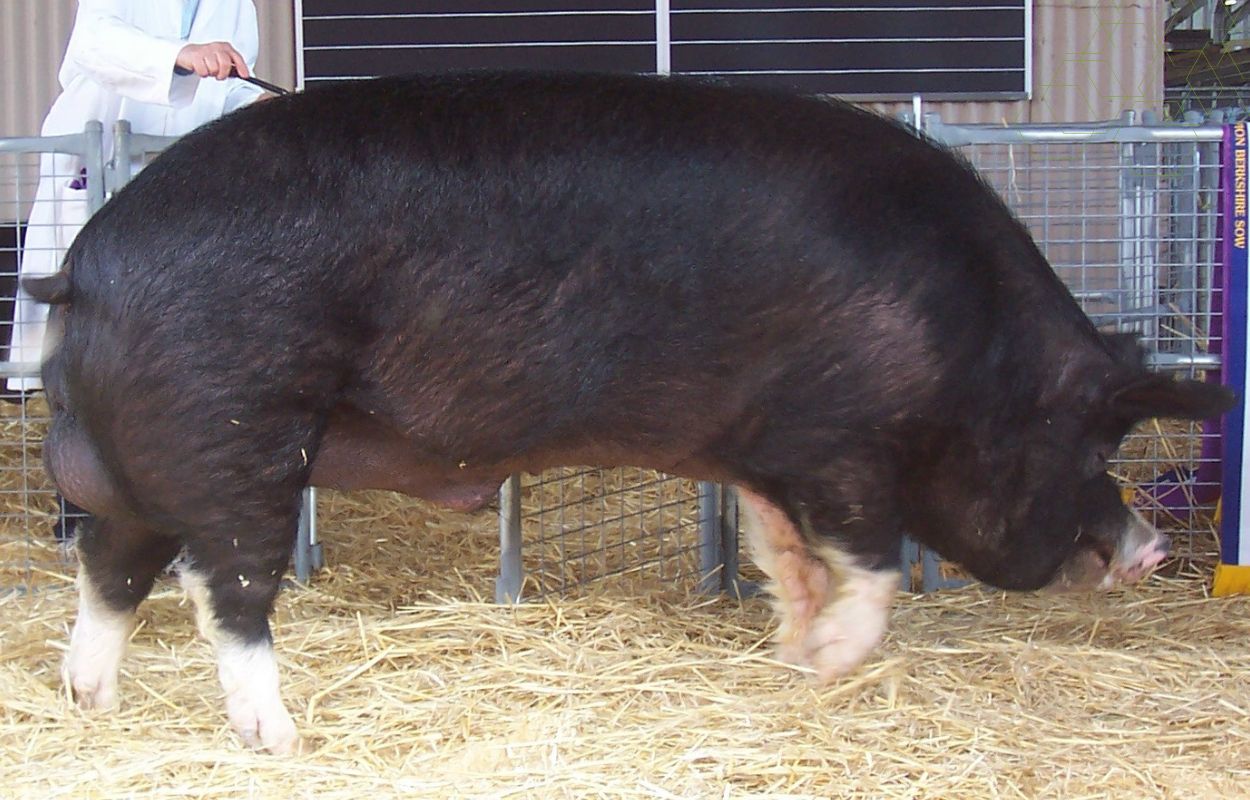
The Berkshire pig’s body is robust and sturdy, with very well-developed musculature.
The body is also deep, which means it has significant depth from the back to the underside. This depth is a sign of good muscling and indicates a well-developed body.
The ribcage of this pig is very well-rounded, giving them a barrel-like appearance.
Back and Belly
The back of the Berkshire pig is long, broad, and very straight.
Its belly is also quite tucked inside its body and not as protuberant as in other pigs, like the Kunekune pig or Vietnamese Pot-bellied pig.
Tail
The tail of this pig is always curled.
Teats
A Berkshire pig has at least 12 teats.
Berkshire pig’s size
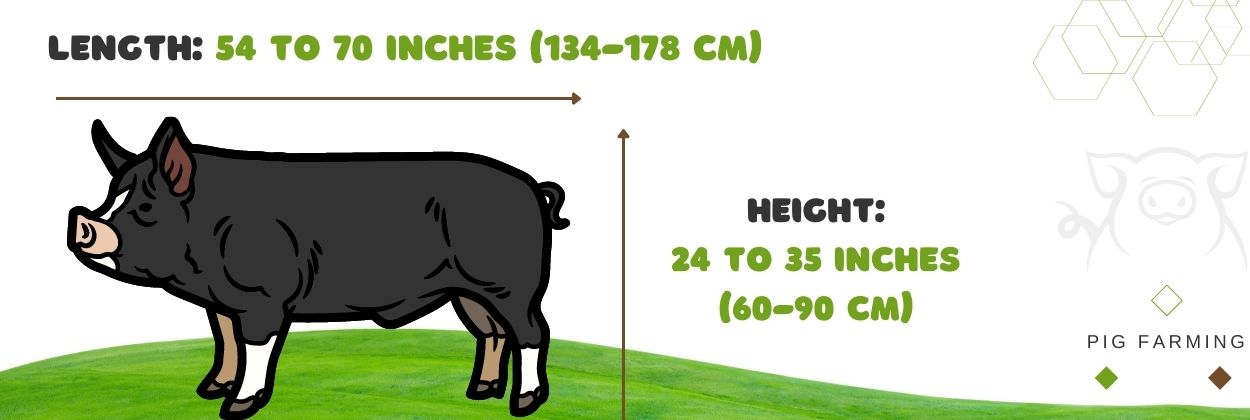
The size of Berkshire pigs is medium to large.
An adult Berkshire pig measures 54 to 70 inches (134-178 cm) in length from snout to tail, with females being smaller than males. The height of a Berkshire pig ranges from 24 to 35 inches (60-90 cm).
The size can vary depending on factors such as age, genetics, and management practices.
Lifespan
Berkshire pig lives 6 to 10 years.
Compared with breeds like Mangalica or Tamworth, they do not live that long, but it is still a good lifespan for a pig.
Growth Rate
How fast do Berkshire pigs grow?
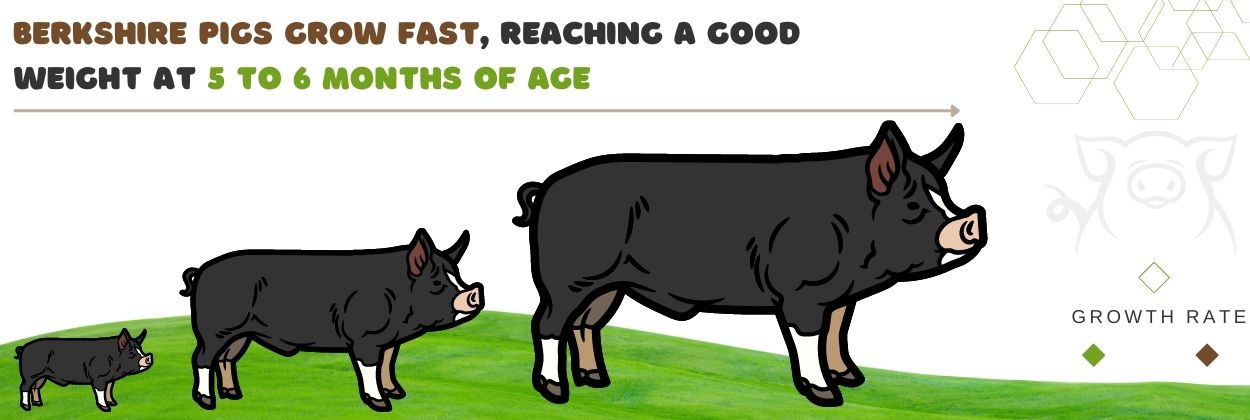
Berkshire pigs grow fast, reaching a good weight at 5 to 6 months of age.
From a sexual maturity point of view, these pigs reach their maturity at 9 months old.
Weight
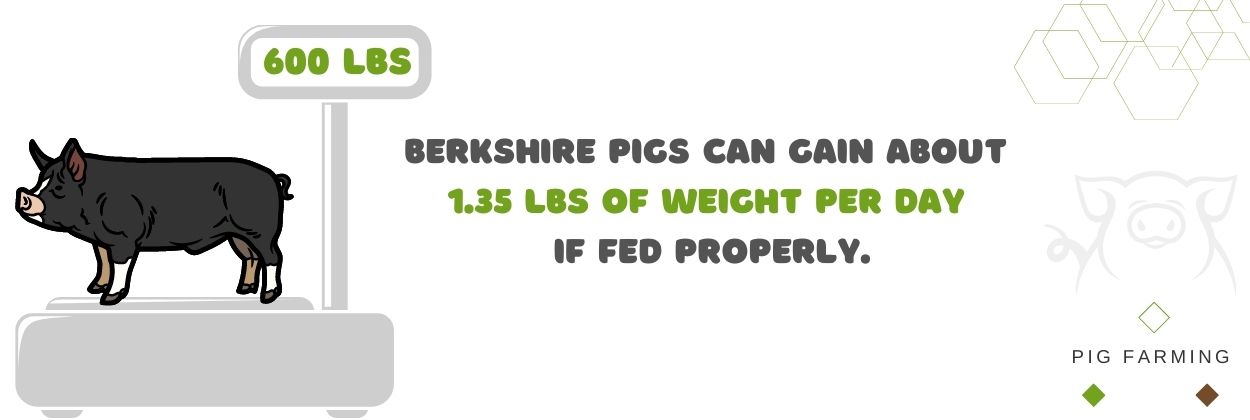
A Berkshire pig can weigh up to 500-600 lbs at full maturity.
Like any other pig breed, Berkshire females are smaller than males, weighing around 500 lbs, while the males can reach up to 600 lbs.
Berkshire pigs can gain about 1.35 lbs of weight per day if fed properly.
However, they have the capacity to reach even higher weights if they are allowed to fatten for a longer period.
Slaughtered Time
The Berkshire pig can be slaughtered at 5 to 6 months when they reach a weight of 250 lbs.
Still, this pig can even be slaughtered earlier at 3-4 months when it weighs 150 lbs.
Being a lard pig, it all depends on the farmer’s preferences, whether they want more lean meat or lard.
You can get 70 to 75% of the hanging weight in meat. So, you can obtain 140-150 lbs of meat from a Berkshire pig with a weight of 210 lbs.
Temperament and Behaviour
Berkshire pigs are very friendly and have a great temperament, making them an excellent pig breed even for those new to pig farming.
These pigs are calm, docile, and easy to handle. Their friendly nature makes daily care extremely easy for farmers. They are also intelligent, and due to their capability to focus, they can be even smarter than dogs. They can be trained to perform easy tricks like sitting, standing, or following a specific direction.
The only time they can display some tantrums or aggression is during the heat period.
They love to socialize with other animals as well as humans. Due to their intelligence, they can recognize emotions like pain, sadness, happiness, and compassion.
Their curiosity is also high, as they adore exploring their surroundings.
Berkshire pigs have a natural instinct for foraging and rooting, which involves using their snouts to search for food in the soil. This behavior is part of their natural instincts and also helps them find food.
Berkshire Pig Meat
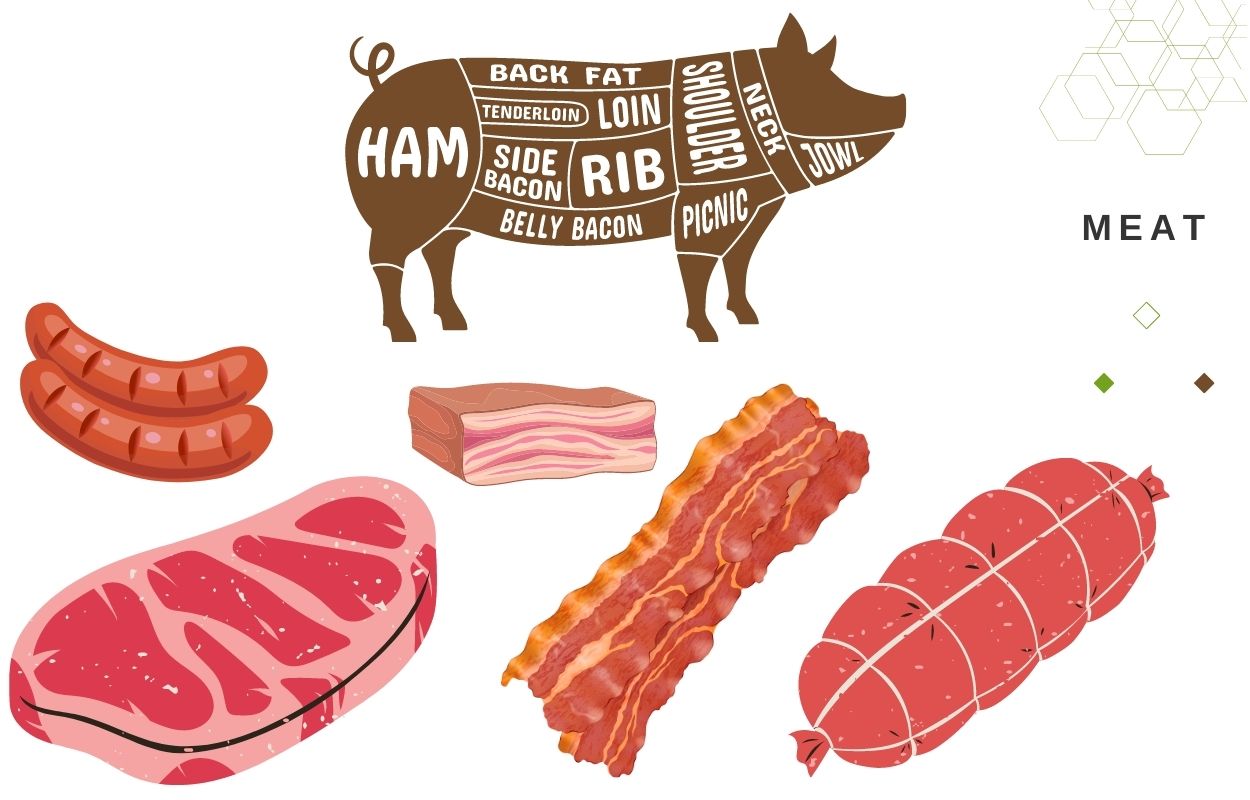
Berkshire pigs are known for their high-quality meat, which has a distinctive flavor that is highly appreciated in the culinary world.
One of the key characteristics of Berkshire pig meat is its marbling.
This dark red meat has a significant quantity of intramuscular fat distributed throughout the muscle, giving it a buttery and smooth texture while enhancing juiciness.
The marbling also contributes to its unique tenderness. The meat is juicy and succulent, making it a preferred choice for various cooking methods, including grilling, roasting, and braising.
Beyond its tenderness and juiciness, the meat stands out from conventional pork in a distinctive manner.
Why is that?
This is because Berkshire meat has a higher pH value, making it of better quality than other pork, as shown in a study by the Korean Society for Food Resource Science Animals.
Not to mention that, compared to regular pig meat, Berkshire meat has higher levels of minerals and vitamins, especially Magnesium and Potassium than Landrace, Yorkshire, or Duroc.
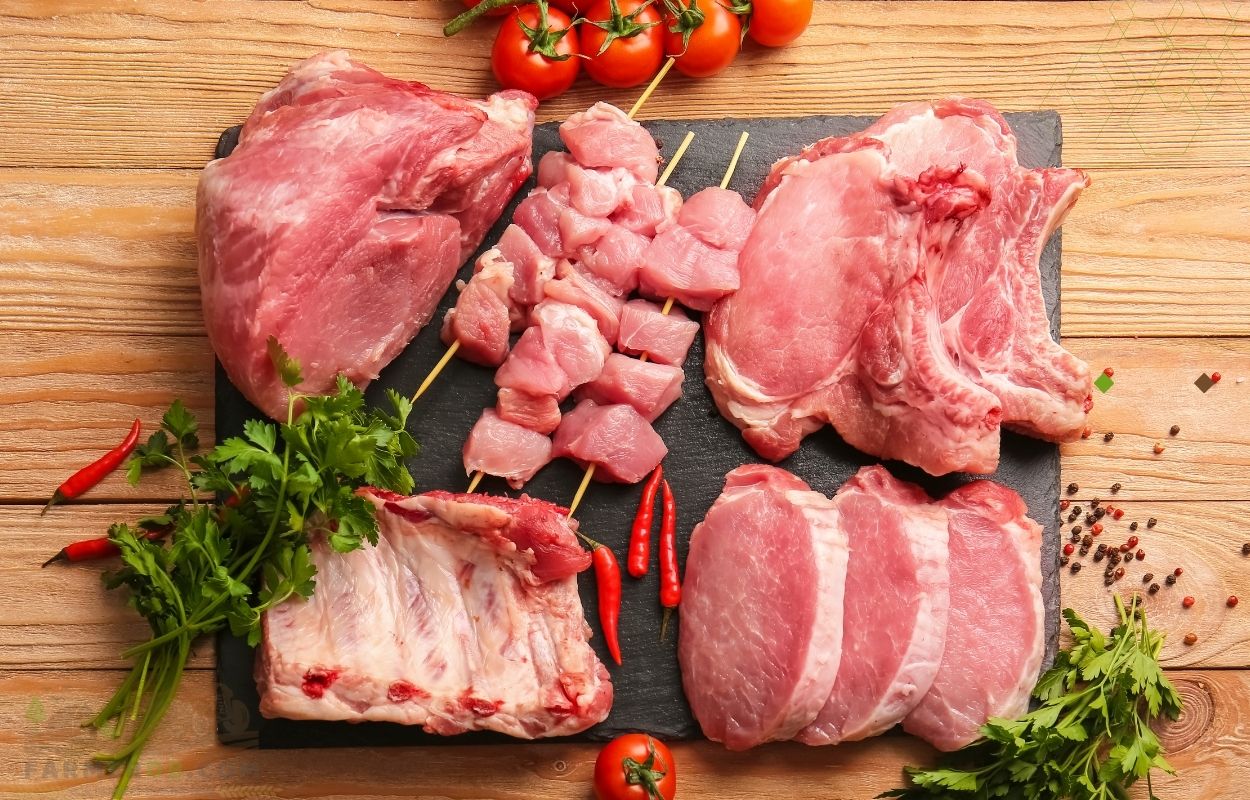
As stated by the same study, when comparing present data regarding Landrace, Yorkshire, or Duroc meats and Berkshire meats, it becomes evident that Berkshire has higher concentrations of inosine, histidine, leucine, valine, isoleucine, phenylalanine, and tyrosine.
On the contrary, Berkshire meats exhibit diminished levels of methionine, potentially influencing a relatively bitter flavor.
The meat of this pig is very healthy to eat as it contains more unsaturated fat and higher levels of all essential free amino acids than regular pig breeds.
Berkshire meat is highly used in the production of hams, charcuterie, salamis, cured bacon, and other high-quality pork products.
Due to these exceptional qualities, Berkshire pig meat is considered a premium product and is often preferred by chefs, food connoisseurs, and pork enthusiasts.
Raising Berkshire Pig
As with any other animal, raising Berkshire pigs involves providing them with the appropriate type of feed that ensures the right nutrients, offering them a suitable environment and space to develop properly.
Let’s see into more detail about how to raise a Berkshire pig.
Feeding Berkshire Pig
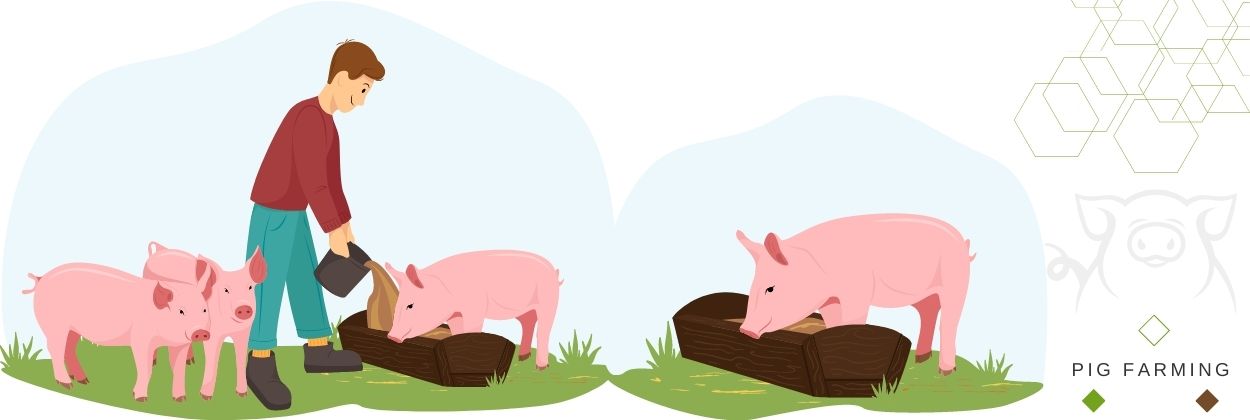
Berkshire pigs can be fed with whole grains such as barley, peas, oats, wheat, fresh vegetables, eggs, foraged walnuts, dairy, and fruits like apples and watermelon, as well as diverse kitchen scraps.
I also strongly recommend allowing them to run freely in the pasture.
This lets them root and forage, consuming beneficial items like worms, insects, grass, and other goodies. At the same time, the instinct of foraging and rooting helps to calm them down and reduce stress levels.
When Berkshire pigs experience stress, the quality of their meat can decline, resulting in dryness and a lack of flavor.
This is the ideal diet for Berkshire pigs if you want to achieve meat with excellent flavor and high quality. For Berkshire pigs, there is a direct connection between their diet and the ultimate quality of the meat.
In terms of quantity, both sows and boars can consume a daily ratio of 4.4 to 6.6 lbs (2 to 3 kg).
As the reproductive cycle progresses, adjustments are made to the sow’s diet for optimal results.
For example, when the sow is on her own, her feed intake is increased to 7.7 lbs (3.5 kg) per day. As piglets are born and begin nursing, the sow’s food intake is further increased by an additional 1.1 lbs (500 g) per day.
Separated from their mother, Berkshire piglets are allowed to eat as much as they can to facilitate rapid growth.
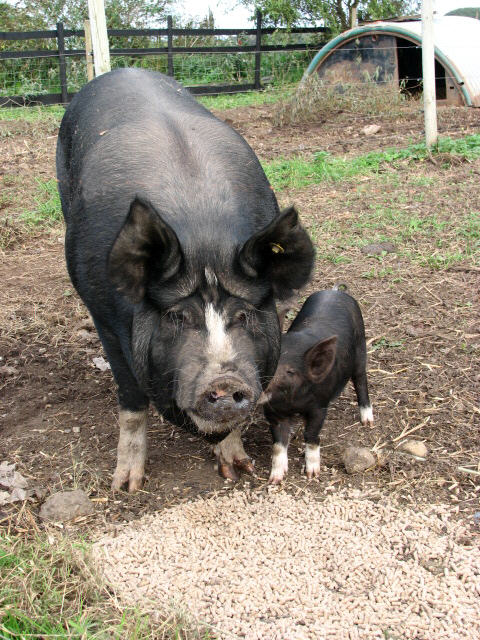
At around 5 weeks of age, they are capable of consuming 2.2 lbs (1 kg) of feed daily. This intake gradually increases as they become larger and their appetite expands.
By the time they reach 14 weeks of age and achieve a weight of 66 lbs (30kg), their daily food consumption rises to approximately 4.8 lbs (2.2 kg).
Tip: Always monitor their feed intake, as they are lard pigs and can fatten quite quickly.
What to not feed Berkshire pigs
I do not recommend you feed your Berkshire pigs corn, soy, salty or moldy foods, especially if your goal is to produce premium meat and fat.
Such a diet can result in lower meat and fat quality, and it may even lead to digestive problems for the pigs.
Environment
The suitable environment for Berkshire pigs includes pastures, forests, grasslands, and swamps, as they are active and curious animals.
They do well in outdoor settings, and I don’t recommend confining them strictly indoors, as this might affect their proper development.
Their dark color also makes them well-suited for outdoor environments, offering protection against sunburn. Therefore, if you want to raise Berkshire pigs, ensure you have ample space for them to explore freely.
Climate
Berkshire pigs can be raised in a range of climates.
They do well in temperate and colder environments due to their thick coat, which helps regulate their body temperature in colder conditions. In addition to their thick hair, they have a substantial amount of fat that serves as natural insulation, keeping them warm in harsh weather.
For warmer climates, I recommend making sure your Berkshire pigs have access to shade, a wallow, and a constant source of fresh water. All of these conditions help regulate body temperature in summer.
Shelter
Berkshire pigs require shelter in both hot and cold weather conditions.
During hot seasons, they use the shelter to sleep comfortably, away from the sun’s rays.
In colder months, they seek shelter to keep warm and protect themselves from extreme weather conditions such as powerful winds, rain, and snow.
Also, they need straw bedding which provides warmth and comfort for the pigs while also helping to manage waste.
How many Berkshire pigs per acre?
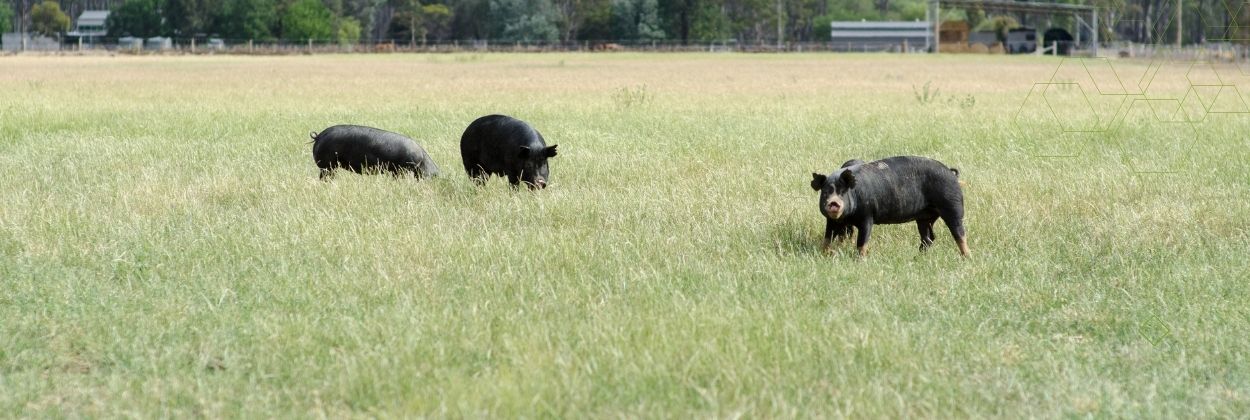
You can raise 20 to 25 Berkshire pigs per acre, which means roughly 5 to 7 pigs per quarter-acre lot.
However, the number can fluctuate as it depends on several factors, such as the size of the land, the quality of the vegetation on the land, and the age and size of the pigs.
For instance, if you only have sows with piglets, you should reduce the number to 15 per acre.
Similarly, if the grazing area for the pigs is not very rich, then you should again decrease the number to perhaps only 8 to 10 pigs.
My advice is for you to analyze your space, introduce some pigs, and then observe their development. If they do not grow as they should, even with supplemental food, it’s possible that your land does not offer them enough feed.
Breeding Berkshire pigs
Breeding Berkshire pigs is simple, but it does require careful planning and understanding of pig behavior. Berkshire pigs can be bred naturally, by introducing a boar to a gilt or sow for natural mating, or through artificial insemination.
If you have a mature female and a boar suitable for breeding, I recommend opting for natural breeding.
Berkshire pigs can be bred at the age of 9 months old. At this stage, the boar is mature enough for mating, and the sow can handle the physical demands of both mating and pregnancy.
For breeding, start by ensuring the boar and sow are healthy.
Next, observe the sow’s heat cycle.
Sows enter heat (estrus) approximately every 21 days.
Look for signs of estrus, including restlessness, decreased appetite, and attempts to mount other pigs.
When dealing with a young female pig (gilt) that hasn’t been bred before, you need to watch the timing closely. She’ll only accept a male if she’s in full heat, and this phase doesn’t last long.
A gilt might stay in heat for about 24-28 hours, while a sow could stay in estrus for up to 3 days.
The gestation period of a Berkshire pig is 113 days, which is equivalent to 3 months, 3 weeks, and 3 days.
Berkshire pigs have an average litter size of 8-10 piglets.
Sows usually don’t experience complications during birth, but it’s good to monitor the process regardless.
Piglets have a favorable survival rate, but you have to take care of them depending on the time of year.
Breeding pigs in the fall results in Berkshire piglets arriving in the winter. Therefore, you need to have a warm environment with appropriate temperature and heating management for them. To achieve this, it’s essential to prepare the living space for the piglets in advance, as failure to do so is a common mistake made by new pig owners.
A Berkshire sow can have two litters per year. They have great mothering skills and are capable of independently caring for their piglets.
Vaccination

The vaccination of Berkshire pigs varies based on the farming practices in place.
When raised in a free-range environment with a lower pig population, you can skip the vaccines as they are quite resistant to various diseases.
If you are managing a larger pig population without free access to pastures, it’s advisable, in my view, to provide the standard pig vaccines against common diseases.
Berkshire pig health issues
In comparison to other pig breeds, such as Piétrain, which has its own health concerns, Berkshire pigs do not have breed-specific diseases or defects.
The primary health issues that Berkshire pigs might face are the general pig diseases commonly found across breeds, such as pneumonia, and skin problems caused by lice, mites, ticks, and erysipelas, among others.
But even for these diseases, the risk of their occurrence increases when there is no well-defined biosecurity plan on the pig farm.
Why should you raise Berkshire pigs?
Profitability
Berkshire pigs are rare due to the need for selective breeding to achieve high-quality meat.
The niche market for them isn’t as extensive as for other commercial pig breeds, and they are not suitable for large-scale commercial pig farming.
But even though they are rare, raising them can lead to a profitable business. They don’t demand extensive care; only basic supplemental feed, space, and regular cleaning of their living area.
Berkshire pigs hold high value in specific markets, particularly in luxury restaurants and specialty butcher shops.
The price of Berkshire pig meat starts at $5 per pound, and depending on the specific cut, it can reach $11-12 per lb for butt chops.
You can also sell Berkshire piglets for profit. A Berkshire piglet can cost $200 to $300.
Registered Berkshire sows and boars can cost $600, while unregistered ones are approximately $400.
Overall, Berkshire pigs can be a profitable business, particularly if there are restaurants in your region, but also if you choose to make agrotourism.
Personal Use
Berkshire pigs are an excellent choice for homesteaders due to their friendly character. These heritage pigs can be easily raised, even by those who have no prior experience with pigs.
As long as you offer them a grazing area, shelter, shade, and a wallow, along with supplemental food, and maintain their living space by regular cleaning, these pigs will develop and grow in a healthy manner.
When raising a Berkshire pig on a homestead, you get a substantial amount of meat and lard, as it is a lard pig breed.
You can enjoy the meat in various forms, such as grilled or cooked cuts, and you can also use it to make your own meat products like sausages or salami.
Also, the lard comes in handy when you’re frying or baking cookies and pies.
Advantages and Disadvantages
| Advantages of Berkshire Pigs | Disadvantages of Berkshire Pigs |
|---|---|
| Friendly and docile temperament | Can be prone to obesity if overfed |
| Well-suited for homesteads | Require proper management and care |
| Easily raised by beginners | Need ample space for grazing and rooting |
| High-quality meat with marbling and unique flavor | Sensitive to environmental changes |
| Efficient converters of feed to meat | |
| Good foragers and grazers |
Where to buy Berkshire pigs
You can buy Berkshire pigs through certified pig farmers.
If you’re in the US, consider reaching out to the American Berkshire Association for comprehensive information on growers.
For those in the UK, connecting with the British Berkshire Association can help you in locating reputable Berkshire pig farmers involved in raising and selling these pigs.
History and Origins
To make sure you have all the information about Berkshire pigs, I will also tell you a few things about their history and where they come from at the end.
The Berkshire pig originated from the English county of Berkshire, which is how the pig got its name. The first records of Berkshire pigs date back to the 17th century, but those pigs were quite different from the modern Berkshire pigs that appeared in the late 18th century.
The modern Berkshire pig appeared through the breeding of the old Berkshire with different small black Asian pigs. This pig breed became very popular during the 19th century among British farmers and butchers, and it was widely recognized as a premium pork-producing breed. The pig was so preferred among the population that it even made its way to the table of the royal family.
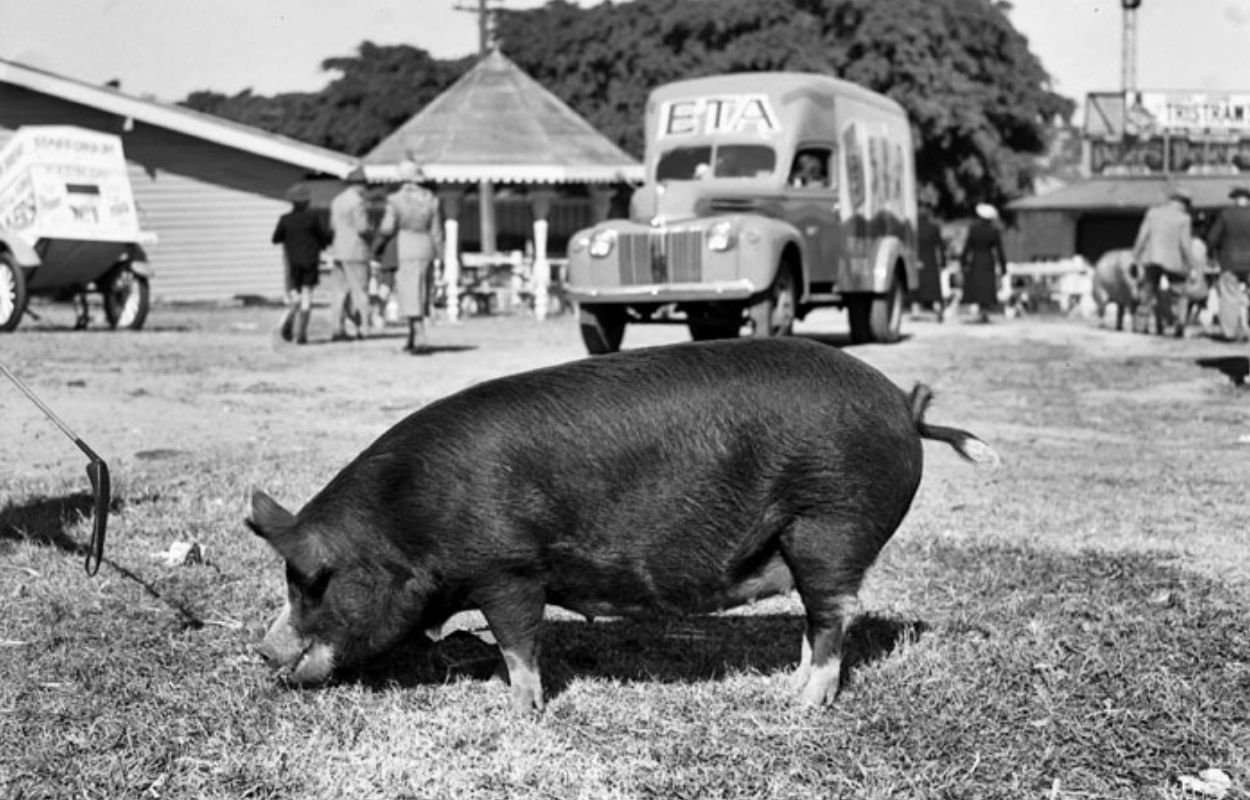
In 1823, Berkshire pigs started to be exported to the USA and then to Australia, as well as New Zealand.
By 1875, this pig breed had its first association, and the first Berkshire pig was registered.
In the late 20th century, the popularity diminished, and the entire population started to decline as farmers focused on other pig breeds, like the white breed for bacon production.
In 2008, it was categorized as vulnerable, with fewer than 300 breeding sows recorded. However, due to its association with the Japanese marketing of “wagyu for pork,” the breed’s popularity has been revitalized, leading to an increase in its numbers.


